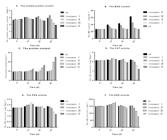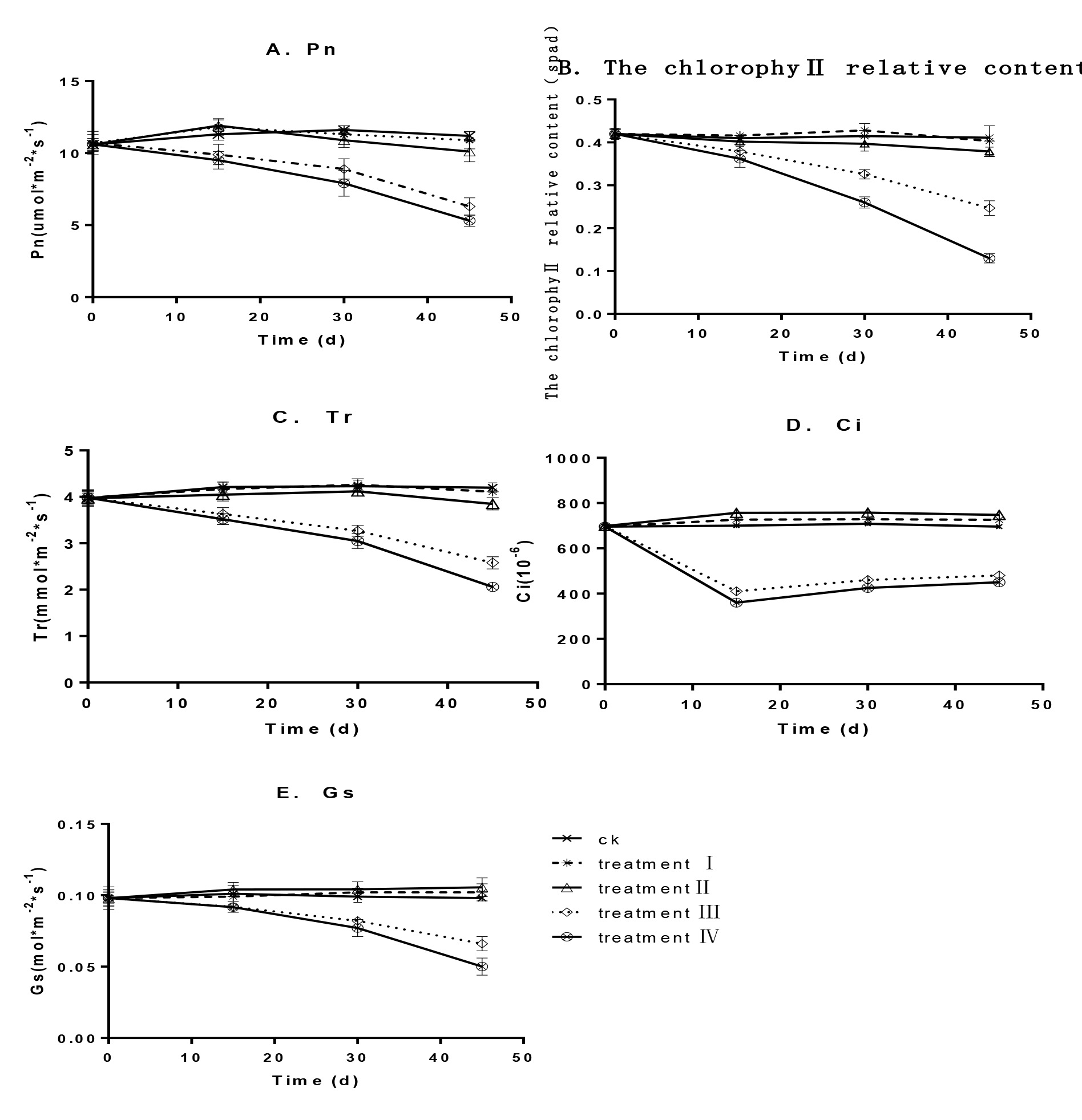Abstract
Shading is a practical measure to reduce the heat stress to grape trees in the summer. However, inappropriate shading will cause the reduction in leaf photosynthesis and consequently the retardation of growth for the plants or the loss of fruit yield and quality for the mature grape trees. In this study we have used 1-year-old ‘YinHong’ grape plants growing under different levels of shading, ranging from full sunlight 0% to 80% reduction, to investigate their growth, physiological and biochemical responses. The results show that shading rate =45% did not significantly affect grape growth. Shading over 45% reduction of the full sunlight, the growth of the grape plants were started to be inhibited. In addition, soluble protein content, the activities of catalase (CAT), peroxidase (POD) and superoxide dismutase (SOD), chlorophyll content, net photosynthetic rate (Pn), stomatal conductance (Gs), intercellular CO2 concentration (Ci), transpiration rate (Tr), PSII photochemical efficiency (Fv/Fm), PSII potential activity1(Fv/Fo) and photochemical quenching (qP) were decreased, whereas free proline, malondialdehyde (MDA) content, the non-photochemical quenching coefficient (qN) and the ratio of the palisade/spongy tissue were gradually increased. In particular, significant changes in plant growth, photosynthetic and the other physiological and biochemical characteristics were observed under a strong shading.
Index terms
grape; growth characteristics; shading

 Thumbnail
Thumbnail
 Thumbnail
Thumbnail
 Thumbnail
Thumbnail
 Thumbnail
Thumbnail



